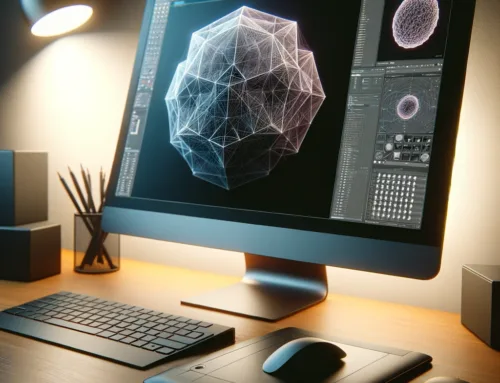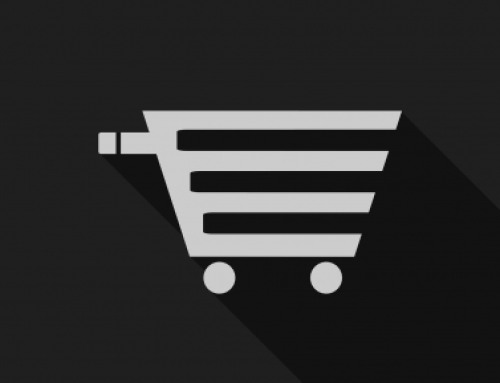Mudbox vs. ZBrush – welche Software ist besser?
3D Charaktermodellierung und die Möglichkeit, 3D-Modelle für den Einsatz in Spielen oder Filmen zu erstellen, bietet mittlerweile für Interessierte sehr gute Karrierechancen. 3D-Modellierungsanwendungen wie ZBrush und Mudbox bieten Designern und Entwicklern erstaunlich leistungsstarke Werkzeuge, mit denen sie schnell und effizient ganz neue Welten erschaffen können, die Gamer und Kinobesucher auf der ganzen Welt begeistern.
Kommen wir nun zu den verschiedenen Funktionen von Mudbox und ZBrush, damit Sie eine Entscheidungsgrundlage haben, welche Software für Sie besser geeignet ist.
Diese Anwendungen können für Neueinsteiger recht teuer sein, so dass die Auswahlentscheidung von hoher Bedeutung ist. Im Folgenden geben wir ihnen einen Überblick über die Funktionen von Mudbox und ZBrush, um eine bessere Auswahl für ihre Zwecke treffen zu können.
Features von Mudbox.
Mudbox verwendet anerkannte Standards in Bezug auf Funktionalität und Layout. Wenn Sie in der Vergangenheit 3D-Modellierungsprogramme oder Softwareanwendungen verwendet haben, dann wird ihnen die Mudbox-Oberfläche in vielerlei Hinsicht vertraut vorkommen, was die Bedienung erleichtert, basierend auf ihren bisherigen Erfahrungen mit dieser Art von Software. Die Software wird ebenfalls von der gleichen Firma wie Maya und 3ds Max hergestellt, so dass die Kompatibilität zwischen Mudbox-Erstellung und Maya oder 3ds Max optimiert wurde, was Mudbox zu einer guten Wahl macht, wenn Sie Max oder Maya für die weitere Entwicklung verwenden möchten. Kameras, Bildebenen, Meshes und Texturen können einfach zwischen diesen drei Anwendungen übertragen werden, um einen reibungslosen Arbeitsablauf zu gewährleisten und sicherzustellen, dass Projekte so wenig Zeit wie möglich zwischen den verschiedenen Entwicklungsabschnitten verlieren. Mudbox nimmt die Workflow-Pipeline auf, damit sie sich nahtlos in die Arbeit integrieren kann, die nach der Erstellung des Modells mit Mudbox anfällt. Um dies zu ermöglichen, verwendet Mudbox die Depth Shadow Mapping Technologie, um Shadow-Effekte für ihre Modelle zu erzeugen.
Mudbox verwendet auch die populäre Painting Technologie. Es verwendet Layer und Layer-Stacks im Photoshop-Stil. Wenn Sie es also gewohnt sind, in einer solchen Umgebung zu arbeiten, dann ist Mudbox die richtige Wahl für Sie. Es ermöglicht das Malen mit mehreren Kanälen, mit dem Photoshop-Benutzer vertraut sind, wie Opacity, Bump und Specularity und Sie können alle Ebenen im Ansichtsfenster gleichzeitig anzeigen, um einen reichen, vollständigen Eindruck ihrer Arbeit zu gewährleisten. Die Anwendung ermöglicht 3D-Painting und verfügt über eine Reihe von Pinseln, die für diese Zwecke entwickelt wurden, wodurch sie sich besonders für Künstler eignet, die diese Effekte erzeugen möchten. Die 3D-Brush-Tools, wie das Grab-Tool, erleichtern Entwicklern und Künstlern die Modellerstellung und -anpassung erheblich. Farbanpassungsfenster innerhalb von Mudbox ermöglichen es Entwicklern und Künstlern, die Farben innerhalb ihrer Modelle schnell anzupassen, indem sie den Farbton und die Sättigung der verwendeten Farben anpassen.
Mudbox bietet Textur-Management-Systeme, mit dem Sie große Textur-Maps verwalten können. Es bietet auch UV-freies Painting an, die es den Künstlern ermöglicht, mit dem Paintingprozess zu beginnen, ohne Zeit mit der Erstellen von UVs vor dem Painting zu beginnen. Support für Ptex-Dateien ist ebenfalls in Maya enthalten, um den Workflow zu verbessern.
Die Software bietet tabletfreundliche Menüs, die den Künstlern die Auswahl der Menüpunkte erleichtern. Diese Menüs ähneln sehr stark an die verwendeten Menüs im Maya, so dass für Künstler oder Entwickler, die mit der Arbeit in der Maya-Umgebung vertraut sind, diese Menüs einen reibungslosen Übergang zwischen den verschiedenen Anwendungen gewährleisten.
Die Schablonenfunktionen machen es einfach, Schablonen für verschiedene Modelle zu modifizieren oder mit den Pinseln neue Schablonen zu erstellen. Kachelbare Schablonen können problemlos verwendet und bemalt werden.
Mudbox verfügt über 22 verschiedene Ebenenmischmodi, die dem Künstler oder Entwickler die Freiheit geben, Modelle zu erstellen und die Mischmodi sind mit Adobe Photoshop kompatibel, so dass es wirklich einfach ist, Ebenen zwischen diesen beiden Anwendungen zu importieren und zu exportieren. Painting Opacity macht die Simulation von realen Objekten, wie z.B. Glas, mit Mudbox einfach.
Die Anwendung ermöglicht es Künstlern, symmetrische Gelenkpaare für ihre Modelle zu erstellen und die Gewichtung der Gelenke zu ermöglichen. Posing Joints können für die Innen- oder Oberflächenplatzierung verwendet werden. Diese Funktionen sollen es Künstlern und Entwicklern erleichtern, ihre Modelle schnell und effizient zu posieren. Künstler können das Modell auch modellieren, während die Modelle in verschiedenen Posen posiert wurden und diese Änderungen werden dann gespeichert und in die neue Pose oder andere Pose übertragen. Diese Funktion ist besonders hilfreich bei schwer zugänglichen Stellen und zum Testen des Modells in verschiedenen Posen.
ZBrush Features.
ZBrush richtet sich im Wesentlichen mehr an den Künstler als an den Programmierer oder Entwickler. Es erlaubt Künstlern, Illustrationen direkt mit Werkzeugen wie dem PaintStop-Tool zu erstellen. Das Tool enthält eine Vielzahl von Werkzeugen wie Bleistifte, Tinten, Farben und Marker, um dem Künstler die Möglichkeit zu geben, sein bevorzugtes Medium zu nutzen. Bild können auch in die Bildebene geladen werden, um sie weiterzuentwickeln oder als Referenzmodelle für die weitere Modelerstellung zu verwenden.
Die Anwendung verwendet ein Werkzeug mit der Bezeichnung ZSpheres, um Basis-Meshes für ihre Modelle zu erstellen. Mit ZSpheres kann der Künstler schnell und einfach eine flexible Armatur für das Modell erstellen und entwickeln. Mit diesem Tool lassen sich auch Anpassungen und Modifikationen der Basis-Meshes einfach durchführen.
Nachdem das Modell mit dem ZSphere-Werkzeug erstellt wurde, bietet ZBrush eine Reihe von verschiedenen Sketch Sphere Brush Tools an, mit denen Künstler das Basis-Mesh mit Pinselstrichen aufbauen können. Masking Brushes können verwendet werden, um eine Maske über bestimmte Bereiche zu malen, um zu verhindern, dass diese Bereiche durch die Scultping-Pinsel verändert werden. ZBrush ermöglicht es den Künstlern auch, ihre eigenen Pinsel zu kreieren und so ihre Kreativität direkt in die Hände der Künstler zu legen.
Das Rigging der Sketch Spheres ermöglicht es den Künstlern, ihre Modelle für den Animationsprozess zu posieren und zu manipulieren. Transpose Master erlaubt es den Künstlern, das gesamte Modell auf ein Objekt zu reduzieren, um das Posing und die Positionierung des Modells zu ermöglichen, wobei die Posen alle im Modell enthaltenen Objekte beinhalten.
Die Dynamesh-Werkzeuge ermöglichen es Künstlern, ihre Modelle mit einer anderen Reihe von spezifischen Pinseln aufzublasen oder zu modifizieren. Diese Bürsten erleichtern die Modifikation des Modells. Dynamesh ermöglicht sofort die Retopologie von Modellen. ZBrush bietet ein einzigartiges Werkzeug mit der Bezeichnung Polygroups. Dieses Tool ermöglicht es Künstlern, Objekte zu gruppieren, um neue Objekte, Modelle oder Assets zu erstellen. Radiale Symmetrieoptionen ermöglichen es Künstlern, Symmetrie und Symmetriemuster innerhalb ihrer Modelle zu erstellen und der Transformationspinsel kann diese Muster schnell und effizient in 3D-Objekte und Ebenen umwandeln.
Tools wie Inflate, clay buildup und der Move Brush ermöglichen es dem Künstler, die vollständige Kontrolle über die Erstellung seines Modells zu haben, während ZBrush sich automatisch um die Geometrie hinter den Kulissen kümmert und den Erstellungsprozess intuitiver und künstlerischer gestaltet als Mudbox. ZBrush macht die Generierung der Topologie für ihre Modelle wirklich einfach mit dem ZRemesher-Werkzeug und mit einem weiteren Pinselsatz, der Änderungen an der Topologie des Modells ermöglicht.
Es gibt auch Pinsel, die es den Künstlern ermöglichen, sich von der Geometrie des Modells zu lösen. Das macht das Modellieren von Details wie die Innenseite eines Mundes sehr einfach. Auch schwer zugängliche oder teilweise versteckte Teile des Modells lassen sich leicht ausblenden. Clip- und Scheibenbürsten machen es wirklich einfach, ihre Modelle hochpräzise zu modifizieren.
Das Spotlight-Tool ermöglicht Künstlern den Zugriff auf hochrealistische 3D-Painting-Werkzeuge für ihre Modelle, um den Realitätssinn zu verstärken.
Auswahl der richtigen Software.
Im Wesentlichen sind MudBox und ZBrush in der Lage, die gleichen oder ähnliche Endergebnisse zu erzielen, die Unterschiede liegen größtenteils im Vorgehen, um diese Ergebnisse zu erzeugen. Als Künstler bietet ZBrush das vetraute Gefühl, mit Pinseln und Werkzeugen zu arbeiten, die den Pinseln und Werkzeugen ähnlich sind, die man in einer Sculptingumgebung verwenden würde. Dem Künstler bietet ZBrush den Look und das Gefühl, wirklich eine Skulptur zu bauen.
Als Entwickler und Programmierer bietet Mudbox die Entwicklungs- und Programmierumgebung, die sie sich bei der Entwicklung neuer Spiele oder 3D-Anwendungen wünschen.


